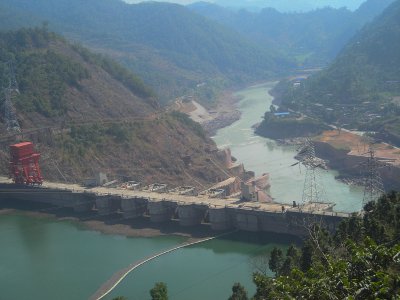It would block two of the Mekong River’s largest tributaries — the Sesan and Srepok Rivers — creating a large reservoir that would force a number of villages to relocate. The vast majority of villagers in northeastern Cambodia oppose the dam.
Much of the attention of the media and non-government organisations (NGOs) in Cambodia has been on the villages that will be flooded by LS2’s reservoir, as well as logging activities associated with clearing the project’s reservoir area (but not always inside it). These communities have been particularly vocal in their opposition to the project, criticising the meagre compensation offered to them and the poor quality of the relocation sites.
But it is important to also focus on the areas beyond the dam’s reservoir and seriously consider the many tens of thousands of people who will be affected by LS2 upstream and downstream.
When the original LS2 environmental and social impact assessment was first prepared in 2008, the authors acknowledged that the dam would have a devastating impact on fish and fisheries in areas far beyond the dam’s planned reservoir. They pointed out that impacts on migratory fish would extend to the Mekong River and Tonle Sap Lake in Cambodia, as well as to the parts of the Mekong River Basin in neighbouring Vietnam, Laos and Thailand.
The same year, I conducted a study on LS2 for the River’s Coalition of Cambodia (RCC), a grouping of local Cambodian NGOs. Released in 2009, the study, titled Best Practices in Compensation and Resettlement for Large Dams: The Case of the Planned Lower Sesan 2 Hydropower Project in Northeastern Cambodia estimated that almost 80,000 people living in 175 villages in the Sesan and Srepok River Basins in Cambodia would lose a large portion of their fish catches due to the dam blocking important fish migrations between the Mekong River and Tonle Sap Lake and the Sesan and Srepok Rivers.
Dramatic changes in water quality and river hydrology, and the associated impacts on aquatic ecosystems and biodiversity, would devastate over 20,000 people living in 19 villages situated along the Sesan and Sekong Rivers directly below the dam in Stung Treng Province, according to the study. And, ultimately, the loss in fisheries would impact hundreds of thousands of people living along the Mekong River and other Mekong tributaries.
The nutritional impact on the people living in the Mekong River Basin will be significant.
In 2012, an was article published in the Proceedings of the National Academy of Sciences by Guy Ziv and colleagues that examined 78 planned tributary dams in the Mekong River Basin. It estimated that of all these projects LS2 would have the most serious impacts on fish and fisheries, possibly leading to a whopping 9.3 per cent decline in fish biomass throughout the Mekong River Basin. The authors concluded that ‘the construction of the LS2 dam is highly detrimental according to this analysis’.
Given these predicted impacts, it is shocking how little attention the media and NGOs in Cambodia have paid to the potential impacts of the project outside of the dam’s reservoir area.
Unfortunately, this situation has played right into the hands of the developers. Though they acknowledge that they will have to compensate those forced to relocate from the reservoir area, they are not offering any compensation to people located upstream or downstream of the reservoir area. Those living outside of the reservoir have never been visited by the developers or government officials, and NGOs have also paid insufficient attention to their plight.
This was clear in July 2014 when I visited two communes (sub-districts) of Phluk and Khamphun located just downstream from where LS2 is presently being constructed. Leaders in both communes told me that they still have heard nothing about compensation in relation to the heavy impacts that they will certainly face if the dam is built across the Sesan River. They also reported that neither the Cambodian government nor the media nor NGOs have paid much attention to them in relation to downstream impacts.
There is an urgent need to address the wider impacts of LS2’s construction.
While those located within the project’s reservoir area are facing some of the gravest impacts, it is time to seriously look beyond the project’s reservoir area. If the large number of people outside of the reservoir area were brought into the debate, more pressure could be placed on the LS2 developers, challenging its construction. It is amazing that NGOs are supporting the preparation of petitions in Stung Treng Province against the planned Don Sahong Dam on the mainstream Mekong River in southern Laos but those same NGOs appear to be paying little attention to LS2, even though many of the same people will be impacted. Under the present circumstances, LS2 is a disaster in the making.
Ian G. Baird is Assistant Professor at the Department of Geography, University of Wisconsin-Madison.

